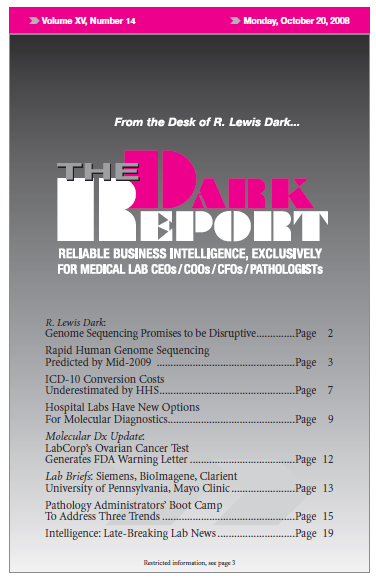CEO SUMMARY: Anatomic pathology groups across the nation must develop effective strategies to address challenges in pricing, intensifying competition, and expensive new technologies. That’s the assertion of three pathology practice administrators who have organized a boot camp in Dallas next month specifically to train other practice administrators and managers. This event will provide administrators from …
Pathology Boot Camp to Address Three Trends Read More »
To access this post, you must purchase The Dark Report.


